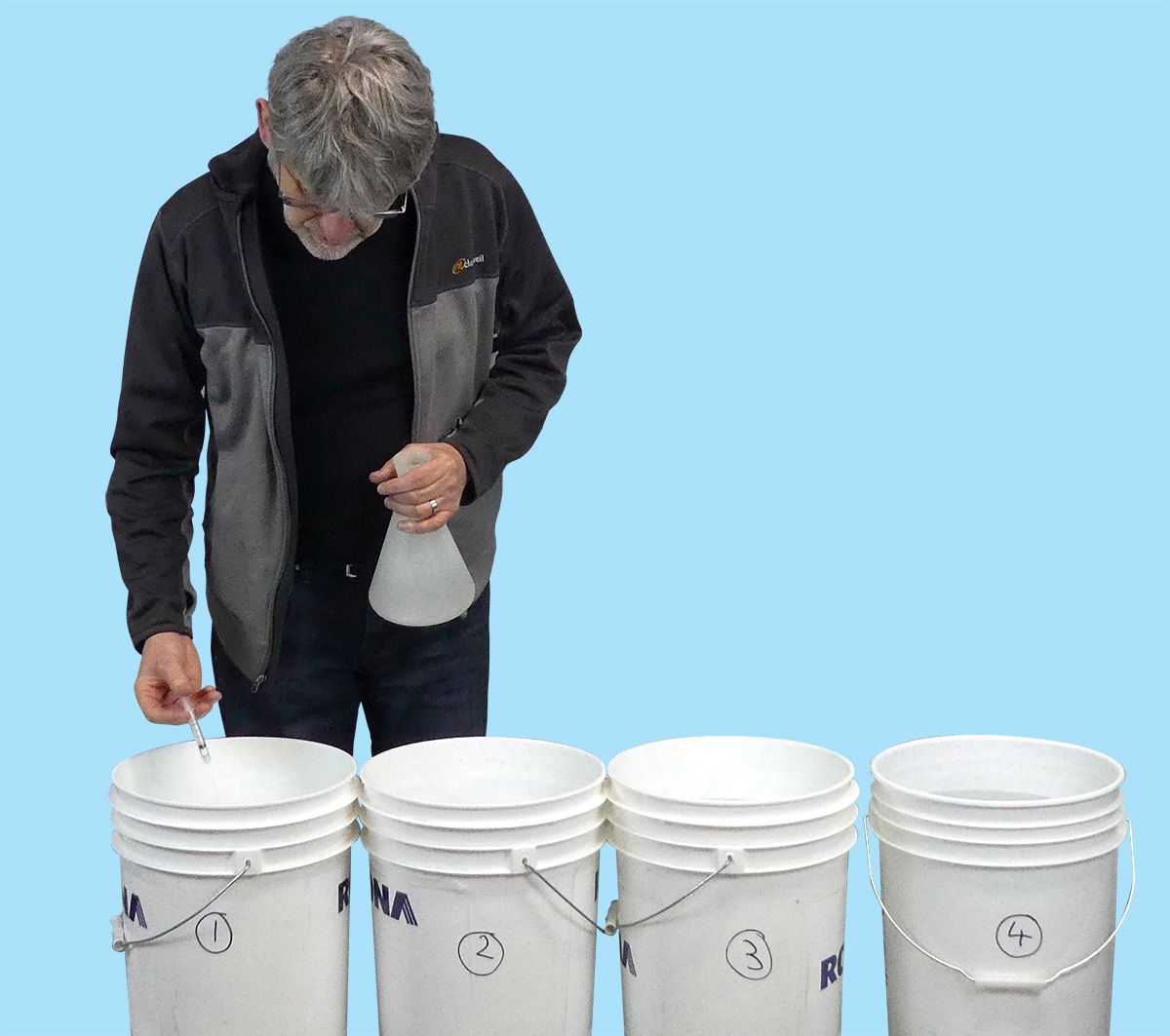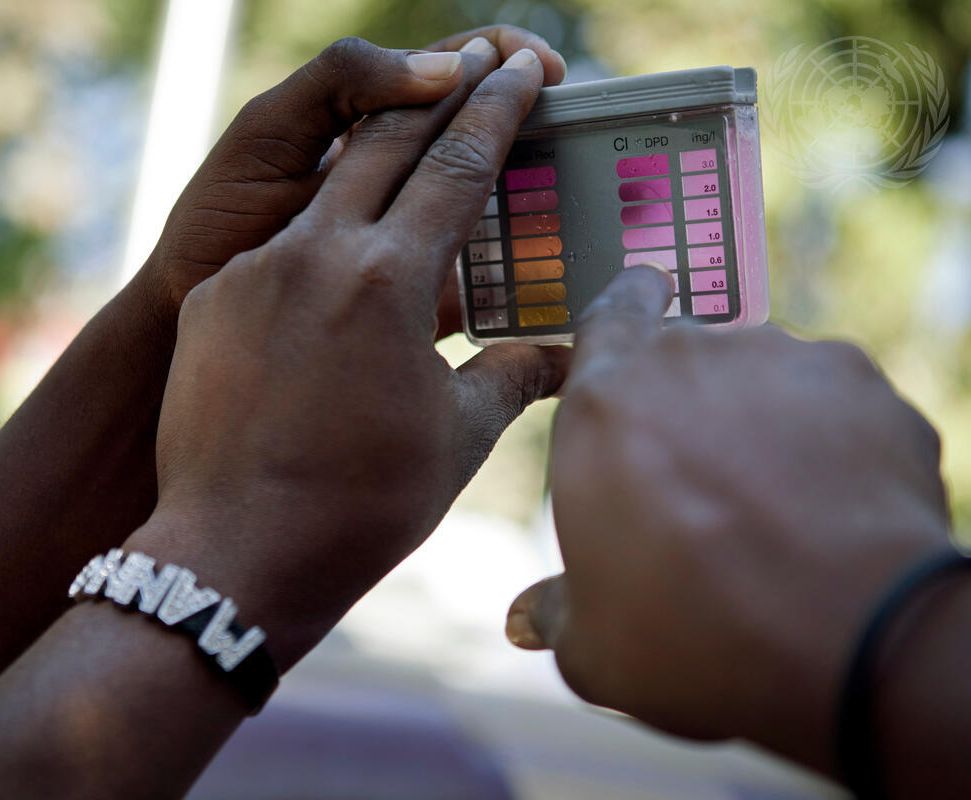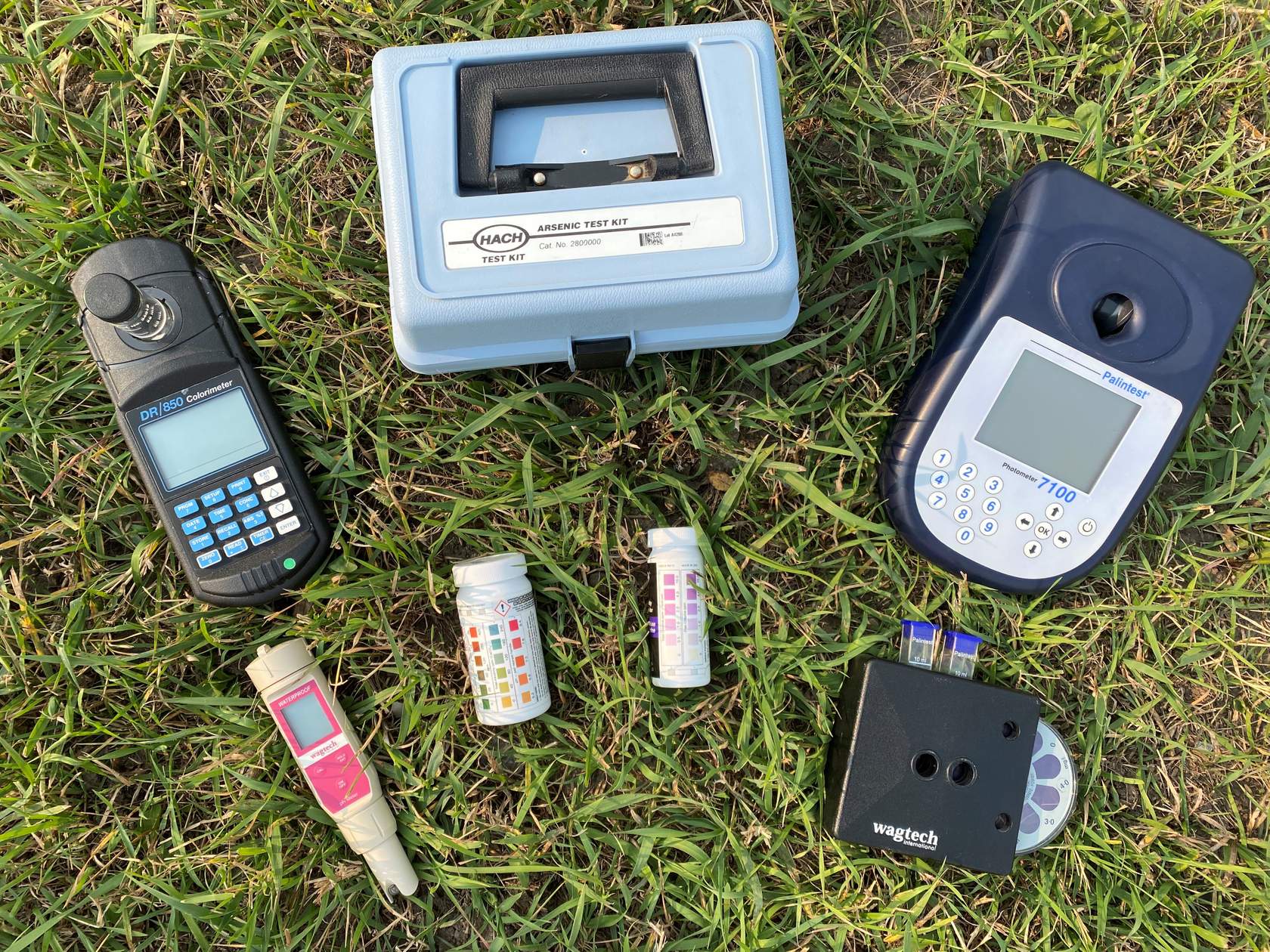Learn About Chlorine
Learn About Chlorine
Topics
Co-developed with
Languages
Arabic•English•French•Haitian Creole•Khmer•Portuguese (Brazil)•Spanish•Swahili
Regions
Africa•Caribbean•Latin America•South Asia•South East Asia•South West Asia
Check Before you Disinfect: Batch Chlorination Scenario
Turbidity, pH, and temperature can all impact how fast and how well chlorine products can disinfect drinking water. Challenge yourself as you manage a water delivery at a humanitarian camp; select and evaluate the required water parameter tests and learn how these parameters can affect chlorine dosage and contact time.
Using the Modified Horrocks' Test to Calculate effective Chlorine Dosage
The Modified Horrocks' Test is a method of calculating the correct chlorine dosage for a known quantity of water. Follow along with Peter Thomson, senior director at CAWST as he conducts the Horrcks' test to calculate the correct chlorine dosage for a batch of drinking water.
Free Residual Chlorine - What Does it Mean?
Are you confused about the difference between free residual, combined and consumed chlorine in drinking water? We can help.
What's Happening with the Chlorine Levels?
This microlearning tool helps you discover potential problems when testing pH and chlorine in the field using a pooltester kit.
How to use a pool test kit
This tool teaches you step-by-step how to use a pool test kit to measure pH, free chlorine and total chlorine. It also includes troubleshooting tips.
About CAWST
CAWST is a Canadian charity and licensed engineering firm. We address the global need for safe drinking water and sanitation by building local knowledge and skills on household solutions people can implement themselves.





